Two years after the Russian invasion, Ukraine remains strong
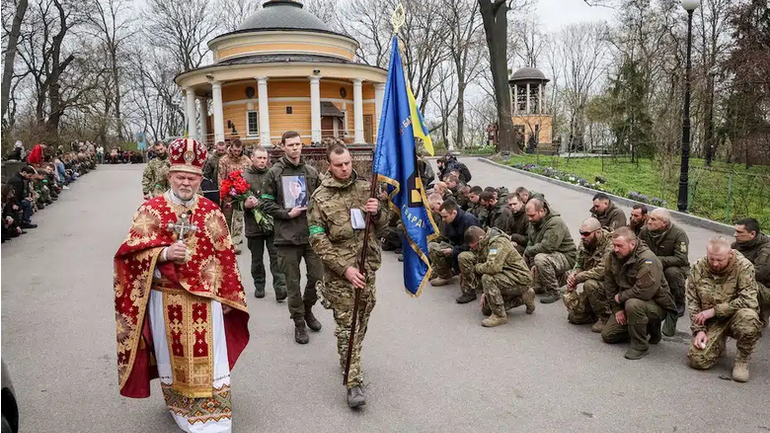
“There isn’t a single family in Ukraine that hasn’t experienced a loss. We pay a very high price for our freedom and, I believe, for the democratic future of the entire European continent. Today’s Ukraine is synonymous with unjust suffering,” the head of the Ukrainian Greek Catholic Church (UGCC), His Beatitude Sviatoslav Shevchuk, stated in a recent interview.
It’s important to remember that the war didn’t begin two years ago. It came in February 2014, when the Russian military seized power in Crimea and proceeded to initiate aggressions in the eastern regions of Ukraine. As early as 2014, tens of thousands of Ukrainians had to flee from the aggressor. Yet, what happened two years ago can only be compared with the cruelty of the Nazis — the whole world has learned about the Russian occupiers’ crimes in the towns and villages near Kyiv, Bucha, Irpin and others.
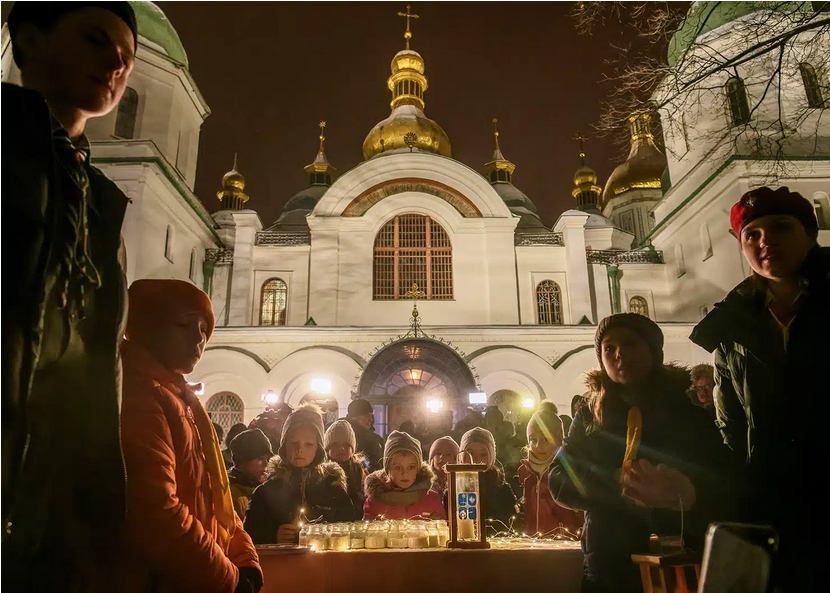
Caritas responds to the outbreak of war
“Convoys of Russian military equipment were passing through our Borodianka. Our houses were damaged. High-rise buildings were bombed, and people were shot,” said 67-year-old Tetiana Kachalenko from the large village of Borodianka near Kyiv. “At first, our people resisted and fought back. Even children — some just 17-18 years old — threw ‘Molotov cocktails’ at the Russian tanks. I’d been hiding in the cellar for five days. I was alone, with no connection and no one but three cats and a dog for company. But when the Russians started bombing my house, I rushed out of the cellar.
“I didn’t know what to do as I hadn’t contacted anyone in five days. Someone told me people were gathering near the hospital for evacuation. I didn’t get there in time — the bus had already left. Later, some people in a passing car took me with them,” Kachalenko said. She recalled the horrors she had witnessed, such as Russian bombers destroying residential buildings. Kachalenko was greatly shocked at how the local Orthodox priest of the Moscow Patriarchate, Father Viktor, welcomed the Russian occupiers and called the Ukrainian military fascists.
In almost two years, 3.1 million people have received nearly 5.2 million different services from Caritas.
Kachalenko and several dozen residents from the occupied territories of the Kyiv region found shelter in the Carpathian town of Kolomyia, in the local Caritas center. There, they received food, protection, medical services and a sense of security. According to Caritas Ukraine, there are 46 such centers (as of the beginning of 2024). Almost half a million people found temporary shelter in these centers. In almost two years, 3.1 million people have received nearly 5.2 million different services from Caritas.
In 2022, Caritas and other charitable foundations primarily helped people with the most basic needs (providing refugees with shelter, food, medicine, hygiene kits and water, clothing and warmth for residents in the frontline zone, etc.). In 2023, they shifted their focus to projects aimed at restoring life in de-occupied territories and territories close to the war zone.
Meeting the changing needs of the war zone
“In 2023, we already more or less understood the main trends and needs, and to a certain extent, the zone where hostilities took place was stabilized. It certainly gave us a little more planning space,” said Hryhoriy Seleshchuk, program director of Caritas Ukraine. “While 2022 was a year of ad-hoc planning, in 2023, we could approach people’s needs more systematically and respond to them. We focused on providing various types of in-kind material assistance closer to the front line with potentially poor access to markets.
“In other territories, we were shifting towards stabilizing types of assistance — i.e., long-term psychosocial support, systematic legal counseling, providing support for child-friendly spaces, and case management. In 2023, we took a step further as we tried to run livelihood projects aimed at employing people and restoring their businesses in urbanized environments and rural areas through agricultural projects,” said Seleshchuk.
According to sociological studies, after the Armed Forces of Ukraine, which are trusted by more than 95% of Ukrainian citizens, volunteers take second place — about 90%.
Like other aid funds and missions, Caritas has achieved a lot thanks to volunteers. In general, volunteers’ activities earned great respect in Ukraine. According to sociological studies, after the Armed Forces of Ukraine, which are trusted by more than 95% of Ukrainian citizens, volunteers take second place — about 90%. It has become the norm for dioceses and many parishes to have volunteer centers that assist soldiers at the front and in the territories close to the front and internally displaced persons. Social service in the UGCC, the Roman Catholic Church and other churches is one of the forms of involving the faithful in parish life and has a long history. “If you can’t defend Ukraine while holding a weapon, help those who can” — this and similar slogans have become very popular in Ukraine.
But how did the Church in Ukraine react to the war and join the resistance movement?
The Church in Kyiv
The Russians tried to storm and take the capital of Ukraine in the first days of the full-scale invasion. Subversive groups of the occupiers worked in the region, and the city was subjected to missile strikes. Now, thanks to the experience of the Ukrainian military and Western aid, the city feels more protected. At the time, though, nearly all missiles hit their targets.
People sought protection, and the Patriarchal Cathedral of the UGCC — consecrated in 2013 — became one of the places offering it. As the head of the UGCC recently noted, the cathedral has become an ark for many. According to him, the lower church of the cathedral came to serve as a bomb shelter, housing several hundred people at times.
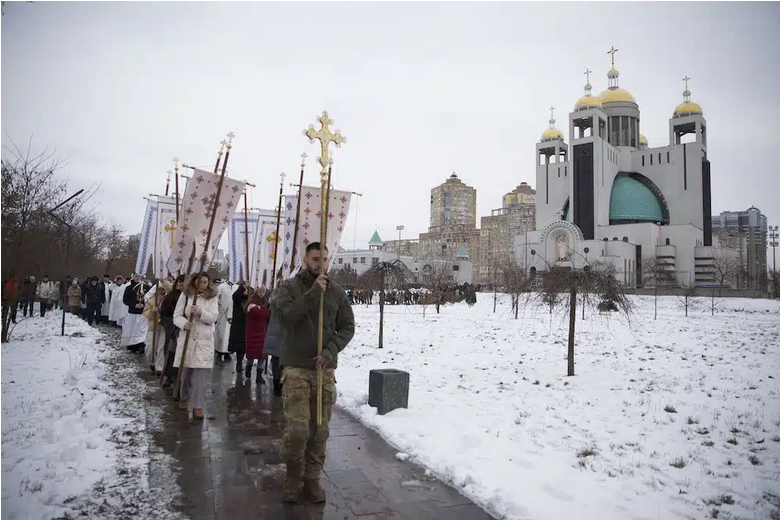
And while in peaceful times, the church was open at certain hours, now it operates around the clock. In addition to offering protection, the cathedral provided all kinds of aid, primarily moral and spiritual support. While Ukrainians felt the coming of a great war, not everyone was morally prepared. Therefore, both adults and children needed words of support.
From the first day of the full-scale invasion, His Beatitude Sviatoslav began issuing daily video and text messages translated into English, German and Italian. The head of the UGCC speaks about the topical issues, offering sympathy and support, and calling for praying and helping others. His appeals are addressed to refugees, mothers who have lost their sons and daughters at the front, families and youth, teachers and students, rescuers and volunteers, doctors and wounded, soldiers and politicians. Every day, a different relevant topic is spoken on. Some appeals have even been addressed to the world, for instance, the one regarding Russia’s nuclear blackmail.
After another massive missile attack on Ukraine, His Beatitude Sviatoslav said: “In just one day, Russia launched eight cruise missiles at Ukraine for a total of $100,000,000. We see how the occupiers find it more and more difficult to explain waging this senseless war to themselves and their people. We see how much money the aggressor invests in destruction and death. Instead of developing their patriotism by investing in the well-being and better life of Russians, they cause great grief and damage to everyone: Russians in Russia and the Ukrainian people,” said the head of the Church. According to His Beatitude Sviatoslav, while the occupiers invest in death, Ukrainians are fighting and giving their lives for life. “That’s why we say: Ukraine stands! Ukraine fights! Ukraine prays!”
The war has united Ukrainians
His Beatitude Svyatoslav has repeatedly emphasized that the war has united Ukrainians and representatives of various churches and denominations, who work together to help the military and those in need, carry out joint projects and plan to rebuild the country.
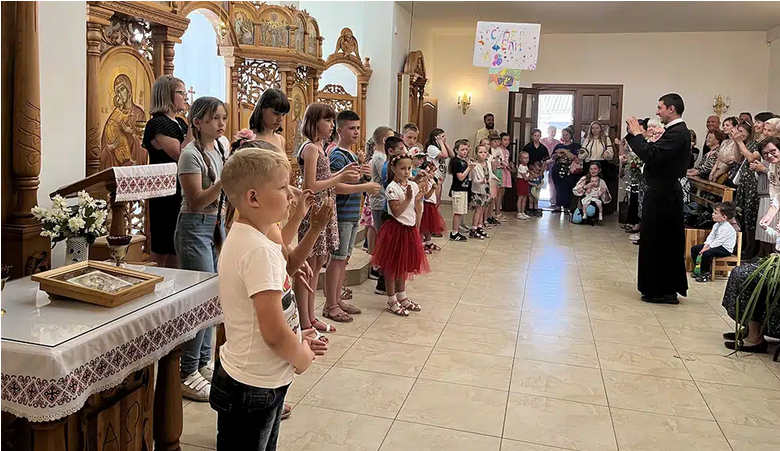
At the same time, the Church’s social service attracts people who see it as the embodiment of the biblical Samaritan. In Chernihiv, an ancient city north of Kyiv near the border with Russia, which was under siege, the UGCC Church became a salvation for many residents. After the liberation of this territory, many of the people became its parishioners, although previously, they might have had different attitudes towards faith and the Church. Also, as Father Ihor Shaban, the head of the UGCC Commission for Inter-Christian Dialogue, many of those who wanted to become parishioners began to come to his church in the city of Boryspil near Kyiv in the spring of 2022. Today, parish life is filled with new and active Christians.
The situation in Kharkiv
The city was one of the first to be attacked at the end of February two years ago and later came to be half surrounded. Due to its proximity to the Russian border, Russian missiles strike faster than an air raid alarm can be sounded. The city is under constant enemy attacks, resulting in injuries and deaths among civilians and damaged buildings, including churches. At the same time, the city has become a symbol of indomitable spirit, a place where part of day-to-day life runs underground — studying, holding concerts and worship services.
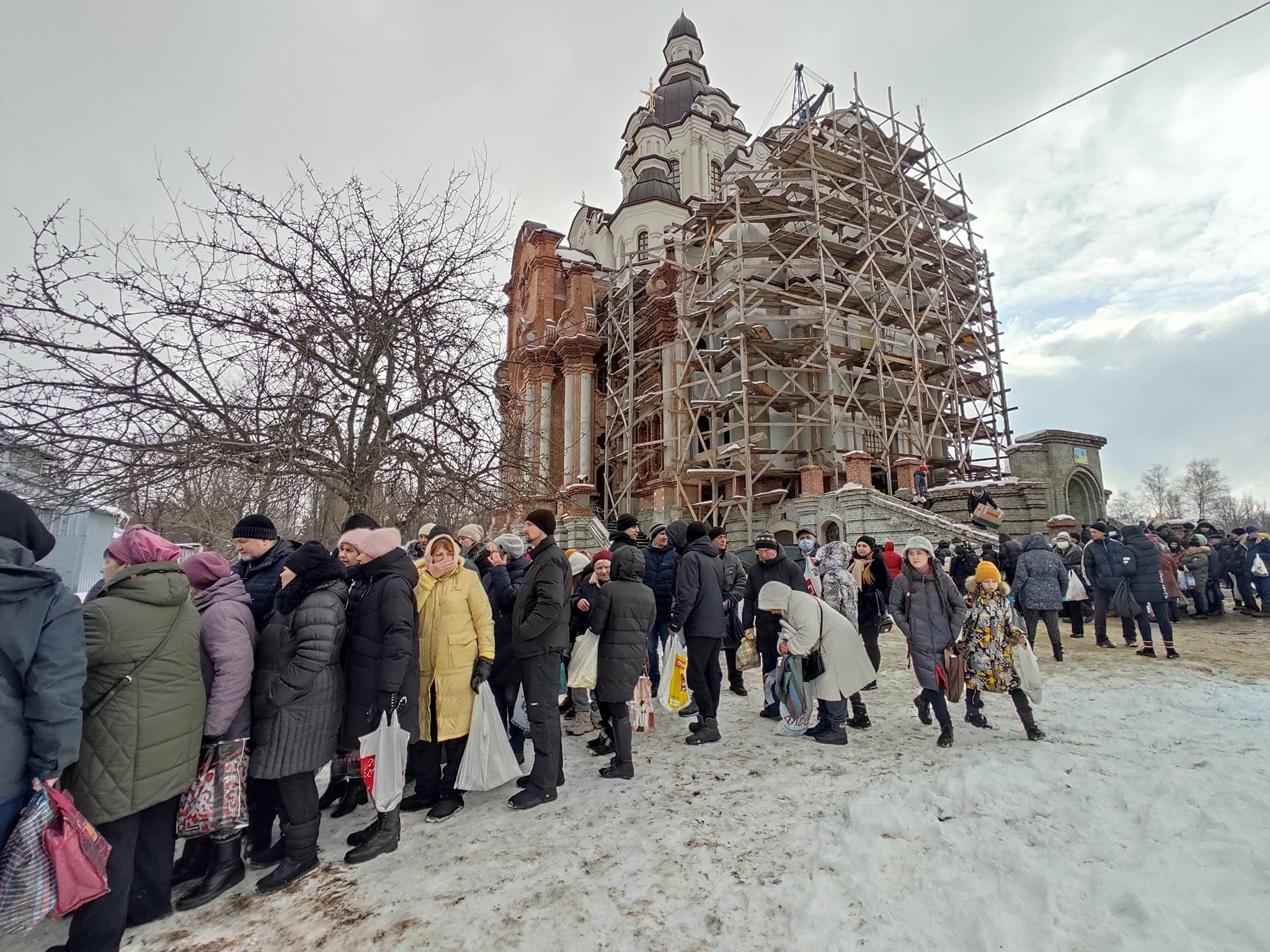
On the first day of the Russian invasion, Bishop Vasyl Tuchapets, UGCC exarch of Kharkiv, held an online meeting with the clergy. It was decided that they remain and pray for peace in Ukraine. After several days, churches resumed their activities and became centers providing aid and support. The Cathedral Church of St. Nicholas the Wonderworker, which was still under construction, became the main volunteer center. Divine services were held every morning and evening, and aid (primarily clothes and food) was distributed to Kharkiv residents. At that time, Kharkiv was continuously shelled, and liturgies were held in the lower church. People came there to pray and find shelter, while some practically lived there.
On Sunday, March 6, 2022, despite the shelling of the city, Bishop Vasyl Tuchapets, together with the cathedral’s parishioners, was distributing aid from western Ukraine among Kharkiv residents for several hours. At that time, the delivery of aid to the city and the evacuation of people were under grave threat. Daily shelling, casualties and destruction put people under great stress. The bishop recalls that people were shaking with terror and had to leave the city, but even attempting to escape was perilous. However, the bishop had no intention to leave the city — he saw the need to stay and serve the people.
In the second week of the full-scale invasion, when more than half of the population of the one-and-a-half-million city had left, Kharkiv continued to live. “Exhausted by night air raids, spending many hours in basements, the winter cold of unheated apartments, tormented by an increasing lack of essentials, the people of Kharkiv live on,” wrote Bishop Emeritus Ihor Isichenko. “Firefighters are trying to save bombed houses, utility workers are patching up damaged communications and roads. Bread and water are being delivered. Even the city’s waste services work!”
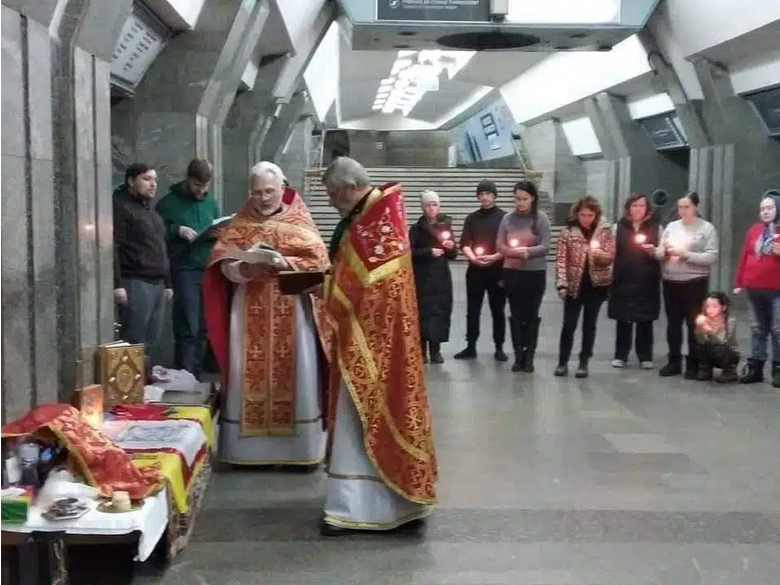
People need culture and faith
And so the city has been living in this way for almost two years. Russian missiles destroy its residential and administrative quarters. People continue to die, peaceful residents of the city, children among them. Schools work online, and concerts and performances take place at metro stations. Churches of various denominations continue to provide aid.
Kharkiv journalist and public activist Volodymyr Chystylin said the need for cultural events became apparent when people somewhat recovered from the initial shock. Many poets, painters, actors, musicians and journalists remained in Kharkiv. Therefore, artistic events, performances and concerts began to be held as a joint effort. Some events were symbolically called “Music of Resistance and Hope.”
“It was necessary to give comprehensive support to those remaining in the city, which required certain internal resources,” Chystylin recalls. The Church also helped, holding services even during daily shelling. Among those damaged by shelling was the church of the Orthodox Church of Ukraine, which Chystylin attends as a parishioner. “The windows were shattered, the metal door damaged, the fence broken. The projectile hit the spot 30 meters from the altar during a wedding ceremony. But love conquers death,” Chystylin said with confidence.
This year, during the Week of Prayer for Christian Unity, ecumenical prayers were held in three city churches: Greek Catholic, Roman Catholic and Lutheran.
Zaporizhzhia: A persecuted church
Situated in the southeast of Ukraine, the city was close to the front after the full-scale invasion began. A large part of the Zaporizhzhia region was under occupation, including the Zaporizhzhia Nuclear Power Plant, which the Russian occupiers now use to blackmail the whole world. Now, the city and the region are under shelling almost daily.
Back in 2014, Bishop Stepan Meniok, the head of the Donetsk Exarchate of the UGCC, which covers the southeastern territories of Ukraine, moved to Zaporizhzhia. Many parishioners and several clergy remained in the occupied territories. They, like representatives of other denominations, were persecuted by representatives of the occupation authorities. There, all churches, except for the Moscow Patriarchate, are seen as enemies of the “Russian world.” After the full-scale invasion, the Russian aggressors banned the activities of Ukrainian Churches, including the UGCC. Clergy of various denominations were imprisoned, while most were later released.
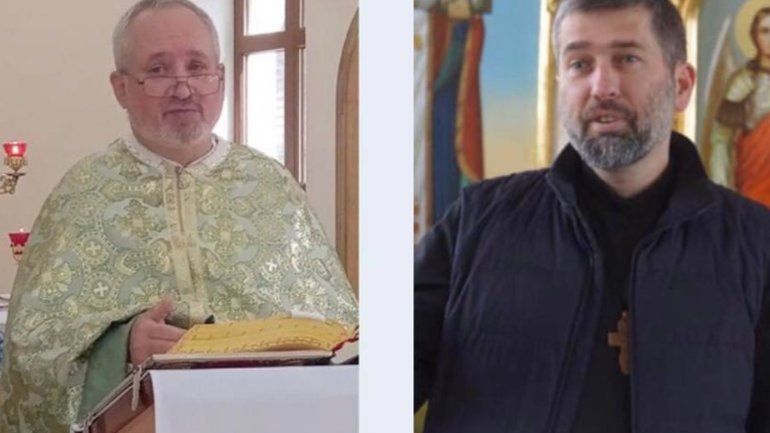
In November 2022, the Russian occupiers arrested Father Ivan Levytsky and Father Bohdan Heleta, Greek Catholic Redemptorist priests who served in the Church of the Nativity of the Blessed Virgin Mary in Berdiansk, Zaporizhzhia region. From the beginning of the occupation of these territories, the priests supported their parishioners and publicly prayed with them. Such activities couldn’t go unnoticed, and so the priests were arrested based on fabricated charges of firearm and explosives possession (the occupiers planted said items in the church building) and partisan activities.
From that moment, their fate became unknown. On Sept. 6, 2023, the bishops of the UGCC presented Pope Francis with an unusual gift during a private audience: a missionary cross, a prayer book and a rosary (symbols of the Redemptorists), as well as photos of Father Levytsky and Father Heleta. They asked the pope to help free them. “We are in regular contact with their relatives,” said the Archabbot of the Ukrainian Province of the Congregation of the Most Holy Redeemer, Father Volodymyr Boreyko, on the anniversary of the priests’ imprisonment. Father Ivan’s family received official confirmation of his captivity from government agencies. Until then, all they had heard were rumors. “We hope this is also the case for Father Bohdan. However, we don’t know anything about their whereabouts or condition.” As noted by Maksym Ryabukha, Auxiliary Bishop of Donetsk, as of the end of January 2024, the fate of these two priests remains unknown. At the same time, some priests managed to leave the occupied territories.
Supporting soldiers and their families
In the central square of the medieval city of Lviv, there are stands with photos and information about the soldiers who will set out on their last journey from the nearby Garrison Church. Almost daily, there are new faces and stories of heroes who fought for Ukraine. These are older people, oftentimes young, but all as one — always bright. They had families, plans and dreams but had to defend their state against the enemy.
These stands are no more than two years old. However, the Garrison Church has been arranging funerals for the heroic defenders of Ukraine for 10 years.
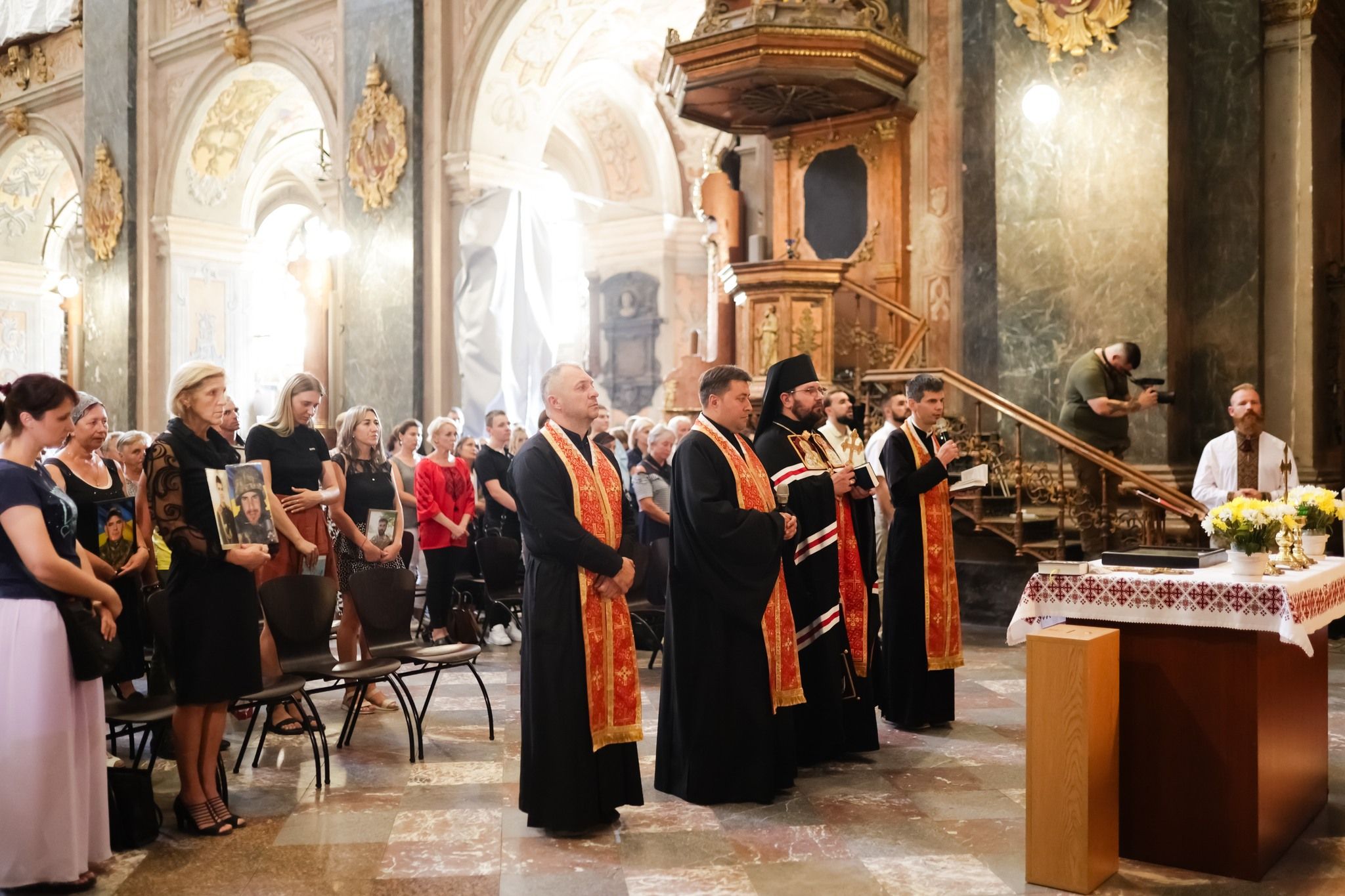
Until recently, the Garrison Church of the Holy Apostles Peter and Paul operated as a scientific library. In 2011, the church resumed divine services through the efforts of Father Stepan Sus and his colleagues. It became the Center of Military Chaplaincy of the Lviv Archdiocese of the Ukrainian Greek Catholic Church and virtually the main military church of the UGCC. Four years ago, Father Sus became the Curial Bishop of the head of the UGCC and now travels with missions to the UGCC centers worldwide. His work is continued by a large group of military chaplains headed by Father Taras Mykhalchuk, abbot of the Garrison Church.
Upon entering the church, in the nave on the left, one can see hundreds of photos of heroes who gave their lives fighting in the Russian war against Ukraine. There are also photos of children whose parents will never get to hug them again. There are fragments of missiles, shells, mines and other instruments of war. There are hundreds of paper birds commemorating the heroes’ souls. The birch cross, which miraculously survived during the massive Russian artillery attack on the Ukrainian military camp in the Donetsk region in early September 2014, is the central element of the exposition. Equipment and military tents were destroyed then, but the cross remained intact. Later, it was handed over to the Garrison Church for safekeeping and has been carried in the Way of the Cross through the streets of Lviv.
According to Father Mykhalchuk, they stopped counting the number of defenders’ funerals. Every life is priceless and thus cannot be reduced to raw statistics. The hardest part is looking into the eyes of children and parents of fallen heroes during the funeral. Every time, you must choose the right words of support.
The Garrison Church has a large team of chaplains and assistants. Many serve in military units, the National Ground Forces Academy and the Military Lyceum. The church holds eight liturgies every Sunday and on major holidays, including one in English. And every time, the church, which is quite large, is filled with people, some of whom are standing outside.
Weddings, baptisms and more
“Life goes on,” says Father Mykhalchuk. There are often wedding photos or photos taken at children’s christenings on the church’s Facebook page. These are photos of young military spouses who marry and have children. At least once a week, photo reports on aid sent to the front or other people in need are posted. Since 2014, the Garrison Church has become one of the leading centers for gathering and sending aid. As noted by Father Mykhalchuk, the aid includes vehicles, clothes, food and equipment for the needs of the military. Every Sunday, one can buy some tasty goodies and souvenirs made by volunteers in the church’s charity kitchen. This way, they collect funds to procure food for the military. No matter how tasty the soldiers’ cuisine is, the homemade food volunteers regularly send them benefits the body, warms the heart and gives them the feeling of unity with those they protect. Books and letters from children go east along with those packages. A photo of a young soldier reading a book by Timothy Snyder in a trench has become viral. Many of the defenders of Ukraine, students and university graduates, find a free moment to read.
When the large-scale invasion started two years ago, and air raid sirens began to blare throughout Ukraine, the Garrison Church came to perform another function — its basements, which are equipped with a museum, began to serve as a bomb shelter for the residents of the city center and numerous displaced people. According to museum workers, several hundred people at a time can stay in the church’s underground. There were also cases when refugees from the occupied territories lived there for several days, waiting for the opportunity to leave the country. Guitar, violin and even cello concerts were held there. People escaping missile attacks brought musical instruments, whether street musicians, local residents or newly displaced people. Even though the church’s underground is no longer a bomb shelter, people still come here. Blaring alarms don’t cause panic anymore, but the desire to find a safe place is essential for those who have witnessed the missile strikes. And the ancient church can be just the place.
Honoring the dead
next to the old Lychakiv cemetery in Lviv speaks of the numbers. Hundreds of heroes lie here, with portraits, national and military flags and symbols on each grave. And these are just those who died in the last two years. Another memorial, the one for the victims of the previous years of the war, stands on the territory of the cemetery itself.
Among them is the well-known opera singer and soloist of the Paris Opera, Vasyl Slipak, who joined the Armed Forces, went to the front as a volunteer, and died in June 2016. In June 2022, 27-year-old Artemiy Dymyd, a graduate of the Ukrainian Catholic University, a Plast scout, the son of the famous icon painter Ivanna Krypyakevych-Dymyd and the first rector of UCU Father Mykhailo Dymyd, the great-grandson of the Ukrainian historian Ivan Krypyakevych and an underground Greek Catholic priest, Artemiy Tsehelsky, died at the front. He participated in the Revolution of Dignity and, in 2014, volunteered to fight at the front. At the time of the full-scale invasion, Artemiy was in Brazil. After learning about Russian aggression, he returned to Ukraine to defend his home. Oleh Vorobyov, a graduate of the UCU Business School, is buried next to Artemiy Dymyd. Heroes who gave their lives defending Ukraine are honored at the university with student and academic scholarships to continue their work. For the second year now, scientific and analytical events are held here, reflecting on the values and principles of rebuilding Ukraine after victory.
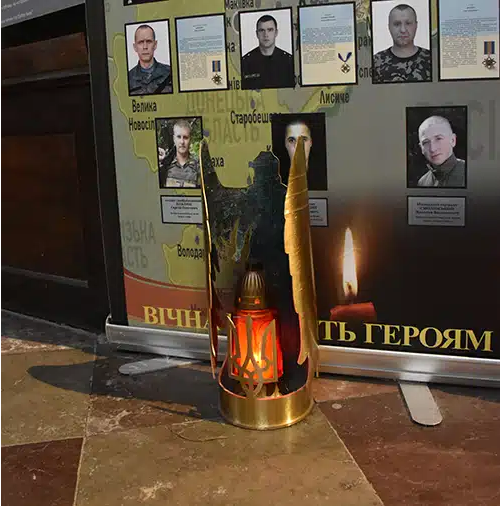
The absolute majority of Ukrainians are certain Ukraine will win. They pray for it every day in churches of various denominations. Recently, we uttered with special solemnity: “God is with us! Understand this, nations! This great hope for God’s help and the world’s support assures us that victory will come, and it’s up to us to fight for it!”









